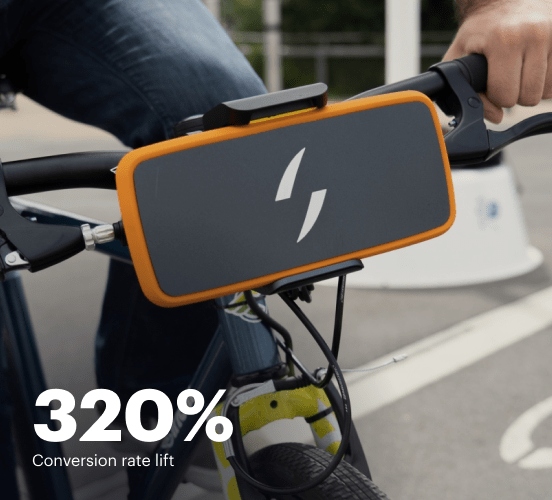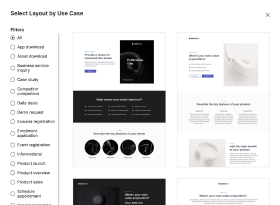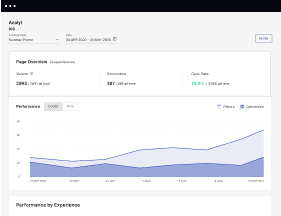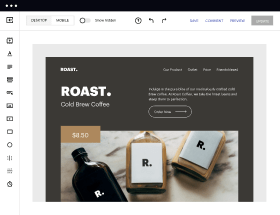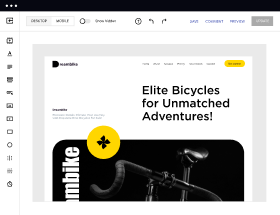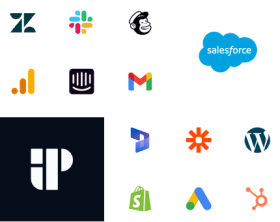WordPress vs. Kajabi: the best platform for a seamless web experience
Discover how WordPress compares to Kajabi regarding features and usability. Find out which platform provides the competitive advantage your business deserves.
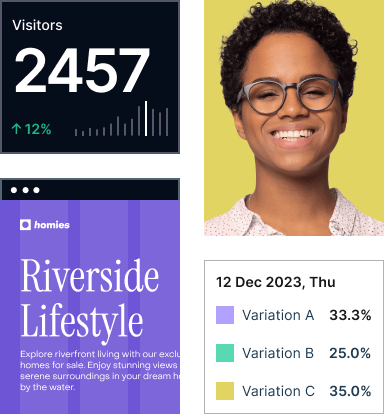
See how Instapage stacks up against the competition
| Feature | Instapage | Other builders |
| A/B Testing | ||
| Drag-and-Drop Tools | ||
| No Coding | ||
| AI Content | ||
| AdMap® | ||
| Instablocks | ||
| Real-time collaboration | ||
| Domains | Unlimited | Limited |
Easier page building without coding
Instapage offers a flexible and seamless page creation experience with a library of 500+ conversion-focused layouts, Instablocks®, a drag-and-drop builder, and AI content generation. With technologies like AMP and the Thor Render Engine®, you can create on-brand, mobile-responsive landing pages that load quickly and start converting during initial visitor clicks.
More insights — better results
Instapage lets you see in detail how each landing page experience and variation is performing so you can make targeted changes that boost page conversions. Use heatmaps for a better understanding of on-page activities, run A/B tests and AI-assisted experiments, and then track and evaluate results within robust analytics dashboards.
More personalized experiences
Instapage lets you quickly create high-performing landing pages tailored to each of your ad campaigns. Deliver personalized experiences for distinct audiences using dynamic text replacement. Effortlessly align specific advertisements to unique pages with AdMaps. Monitor audience-level metrics using our advanced data tools.
Built-in collaboration
Instapage collaboration capabilities bring your entire team together to speed up the process of landing page review, approval, and launch. No more frustrating and unnecessary revisions or edits scattered across emails. Provide instant feedback, conduct real-time page edits, and securely share your pages with outside stakeholders.
All your favorite apps working together with Instapage
With 120+ integrations, Instapage easily connects with your favorite advertising, CRM, email, e-commerce, marketing, and sales solutions.
Explore all integrations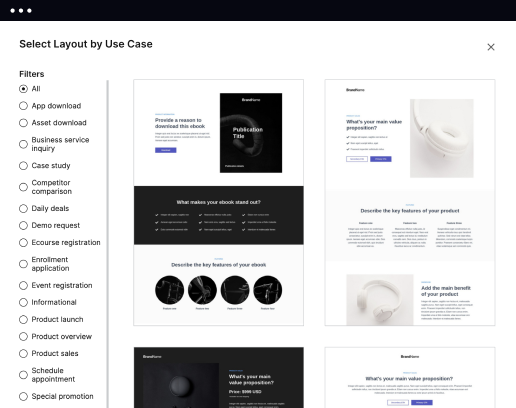
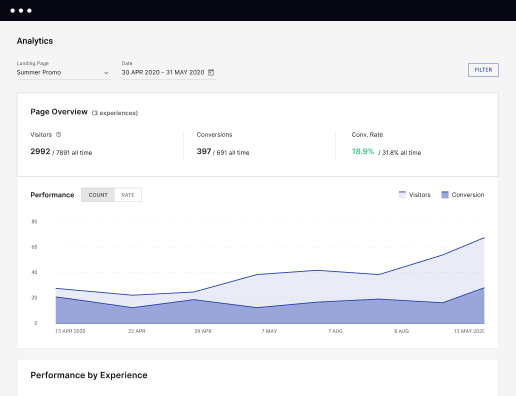
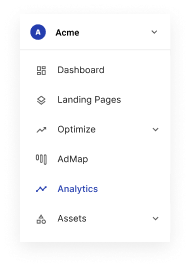
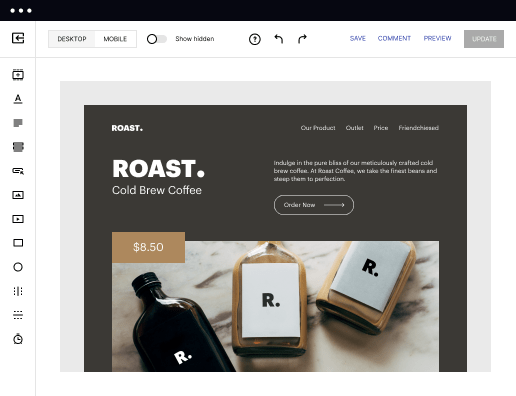
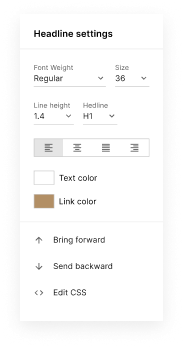
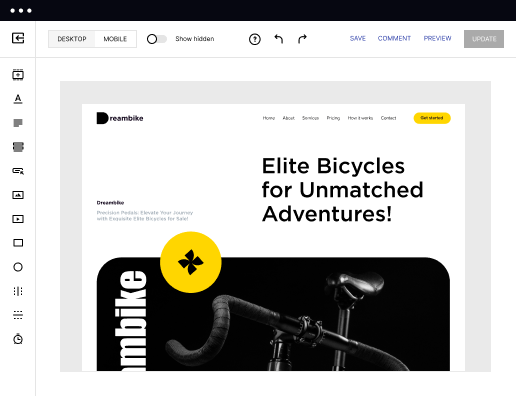

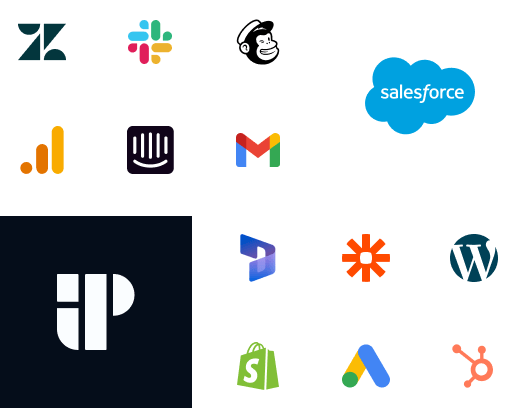
Easier page building without coding
Instapage offers a flexible and seamless page creation experience with a library of 500+ conversion-focused layouts, Instablocks®, a drag-and-drop builder, and AI content generation. With technologies like AMP and the Thor Render Engine®, you can create on-brand, mobile-responsive landing pages that load quickly and start converting during initial visitor clicks.
More insights — better results
Instapage lets you see in detail how each landing page experience and variation is performing so you can make targeted changes that boost page conversions. Use heatmaps for a better understanding of on-page activities, run A/B tests and AI-assisted experiments, and then track and evaluate results within robust analytics dashboards.
More personalized experiences
Instapage lets you quickly create high-performing landing pages tailored to each of your ad campaigns. Deliver personalized experiences for distinct audiences using dynamic text replacement. Effortlessly align specific advertisements to unique pages with AdMaps. Monitor audience-level metrics using our advanced data tools.
Built-in collaboration
Instapage collaboration capabilities bring your entire team together to speed up the process of landing page review, approval, and launch. No more frustrating and unnecessary revisions or edits scattered across emails. Provide instant feedback, conduct real-time page edits, and securely share your pages with outside stakeholders.
All your favorite apps working together with Instapage
With 120+ integrations, Instapage easily connects with your favorite advertising, CRM, email, e-commerce, marketing, and sales solutions.
Explore all integrationsLeading the way in building high-performing landing pages
Get started with Instapage in a few steps
Create your Instapage account
Start with Instapage by signing up via Google or your email. You'll get access to a free 14-day trial to discover Instapage capabilities. Feel free to cancel anytime during the 14-day trial if you decide that our product is not suitable for your business.
Build and personalize your page
Create your first landing page from scratch or choose a template from 500+ customizable layouts. Use the drag-and-drop builder to add page elements, fonts, and backgrounds, refine content with AI, or add custom HTML, Javascript, and CSS.
Review and make edits
Collaborate on page designs and streamline review processes. Invite your team members and stakeholders to review, edit, and provide feedback on your landing page. Collaborate knowing your page is confidential and only accessible to authorized users.
Publish and track page performance
Publish your page to a domain or custom URL. Connect your pages to the ads you've created and track page performance within the analytics dashboard, run A/B tests and AI experiments, analyze results, and continuously optimize your landing page to maintain high conversions.
WordPress vs. Kajabi: The Digital Arena Showdown
Navigating the ever-evolving landscape of online platforms can be quite the adventure. With countless options available, WordPress and Kajabi stand out as formidable players in the realm of digital marketing. These platforms are often at the forefront of discussions when marketers look for tools to enhance their online presence. Each provides unique features and capabilities that cater to different needs, making an informed decision crucial. This article sets the stage to compare WordPress and Kajabi, evaluating their strengths, weaknesses, and ultimately how they stack up against another contender waiting in the wings: Instapage. So fasten your seatbelts as we embark on this insightful journey through the world of website and landing page builders, where the right choice can determine your success in reaching your goals.(min: 200 words)
Introducing the Titans of Digital Marketing
In one corner, we have WordPress, the heavyweight of website creation that has powered nearly 40% of the internet. This platform is known for its flexibility and vast ecosystem of plugins. From simple blogs to complex e-commerce sites, WordPress can handle it all. On the other side, Kajabi emerges as a dedicated platform geared towards course creators and membership sites. It combines webpage creation, marketing automation, and sales funnel functionality seamlessly, making it a favorite among knowledge entrepreneurs. Both platforms are titans, but each has its signature strengths that make them appealing to various audiences. Meanwhile, Instapage lingers in the background, primed to further shake up the competition with its unparalleled landing page capabilities. The stage is set for a thrilling comparison as we dive deeper into what makes each of them tick.(min: 200 words)
Feature Face-Off: Who Packs the Bigger Punch?
When it comes to features, both WordPress and Kajabi bring their A-game to the marketing arena. WordPress boasts an extensive library of plugins, which means users can tailor their sites with near-limitless customization options. From SEO tools to social media integrations, the variety is astounding. On the flip side, Kajabi offers integrated features that focus on online courses and membership management with tools like customizable pipelines, quiz creation, and email marketing automation at your fingertips. While both platforms shine, there's another contender, Instapage, prepared to leap into the spotlight with its powerful landing page tools designed for conversion optimization. This behind-the-scenes player is ready to take center stage at any moment, making things even more intriguing for marketers looking for the right fit.(min: 200 words)
Usability: Who Makes the Grade for Beginners and Experts?
Diving into usability, we see how each platform caters to their respective user bases. WordPress often requires a little more technical know-how, with an initial learning curve that can feel like navigating an obstacle course for newbies. However, once you get the hang of it, the possibilities are virtually endless. On the other hand, Kajabi aims for user-friendliness. It’s designed for those who want straightforward paths to creating online courses and managing memberships without diving deep into coding or design. While both platforms have their pros and cons, we can all agree that the learning curves can be more like adventures than arduous tasks, providing a sense of accomplishment as users conquer their challenges along the way.(min: 200 words)
What WordPress Brings to the Table:
- A vast ecosystem of plugins and themes for customization.
- Advanced SEO capabilities through dedicated plugins.
- Support for e-commerce through WooCommerce integration.
- Robust community support with a wealth of resources.
- Frequent updates and improvements from developers.
The Key Features of Kajabi:
- Integrated email marketing and sales funnels.
- Course and membership management tools.
- Easy-to-use template designs specifically for digital products.
- Built-in analytics for tracking performance and engagement.
Common Strengths Shared by WordPress and Kajabi:
- Mobile responsiveness for all site components.
- SEO-friendly structures and features.
- Strong community forums for support and ideas.
- Ability to integrate with various third-party tools.
- Customizable elements to fit branding needs.
- Robust security features to protect user data.
As both platforms dance in the ring, it’s hard not to notice that Instapage is quietly waiting on the sidelines, ready to showcase its capabilities in creating high-converting landing pages that can rival and even surpass the offerings of both WordPress and Kajabi. With its laser focus on conversion, it may just have the perfect answer for marketers caught in the middle of the WordPress versus Kajabi debate.
Performance: Who Takes the Win?
Performance is always a critical consideration. In the digital world, users have little patience for slow-loading pages or non-responsive designs. Testing reveals that WordPress can deliver solid performance, especially with the right hosting provider and optimization tools. However, those who neglect performance tweaks may find their websites lagging. Kajabi, with its built-in optimization tools, typically excels in delivering fast load times, which is essential for retaining engagement. Users value speed, as they want an experience comparable to ordering fast food—quick, efficient, and satisfying. Imagine slow-loading pages being compared to molasses on a winter day; that’s a scenario nobody wants. A well-optimized site can spell the difference between a bounce and a conversion, making performance a top priority for both platforms. So, as these titans circle one another, a quest for speed and efficiency continues to be paramount in establishing their winning edge.(min: 200 words)
Customer Support: The Unsung Heroes Behind the Scenes
With great platforms come great support needs, and both WordPress and Kajabi have their support squads ready to assist. WordPress, with its diverse community, offers extensive forums, documentation, and tutorials to help users troubleshoot issues. However, users often find themselves sifting through large quantities of information. In contrast, Kajabi focuses on providing a more centralized support experience with dedicated customer service agents ready to assist with specific queries. The community surrounding Kajabi is also quite supportive, ensuring that users have resources to turn to when they need help. Support channels are essential in enhancing user experiences, making them feel less like solo adventurers and more like part of a well-coordinated team seeking victory in the marketplace.(min: 200 words)
The Pricing Showdown: Who Gets the Edge?
Advantages of WordPress Pricing Strategy:
- Free core platform with numerous free themes and plugins.
- Flexible pricing based on hosting services chosen.
- No ongoing subscription fees if hosted independently.
- Ability to use paid plugins for specific needs.
How Kajabi's Pricing Strategy Stands Out:
- All-inclusive platform focused on online education.
- Support and features bundled into pricing tiers.
- Risk-free 14-day trial to evaluate the service.
- Integrated marketing tools alleviate additional costs.
As we assess the pricing strategies, WordPress's flexible model allows cost-conscious users to tailor their expenses. Alternatively, Kajabi's pricing reflects its all-in-one solution, appealing to those who prioritize convenience. Meanwhile, Instapage offers flexible pricing that showcases superior value for money while ensuring everything needed for conversion-focused campaigns is available. This flexibility could help all the platforms to address diverse marketing budgets effectively. This layered evaluation highlights how selecting the right pricing plan can influence overall satisfaction and success.
After laying down the prices, we can’t ignore the cheeky aspect of pricing: it often reflects the quality of service you’re signing up for. It’s crucial to note, though, that hidden gems and competitive pricing models exist throughout the industry, especially with platforms like Instapage that manage to surprise users with outstanding offers and packages.
Meet Instapage: The Unsung Hero of Landing Pages
As we shine the light on Instapage, it emerges as the secret player ready to redefine conversion strategies for marketers across the spectrum. With its focus on creating dedicated landing pages that not only look amazing but also help drive conversions, Instapage offers distinct features such as A/B testing, built-in analytics, and a host of templates designed for quick deployment. While WordPress and Kajabi serve important roles, Instapage's specialized tools are tailored to enhance conversion rates like never before. This unique value proposition makes it an essential consideration for marketers aiming to optimize their campaigns beyond website building or course management. Instapage's potential to serve as a marketing powerhouse empowers businesses to elevate their online strategies in ways they might not have expected, turning curious users into enthusiastic customers and loyal brand advocates.(min: 200 words)
In wrapping up this exploration, it's evident that the quest for the ideal platform is personal and dependent on your unique business goals. WordPress is excellent for those who value flexibility and control, while Kajabi serves those looking to create online courses and manage memberships efficiently. However, Instapage stands out as a powerful tool designed specifically for marketers striving for high-conversion campaigns. No matter which path you choose, remember to focus on your objectives and how these tools can help you clear the hurdles in your marketing journey, empowering you to reach new heights in your online pursuits.
FAQs
Try the most advanced landing page platform today
Get started

